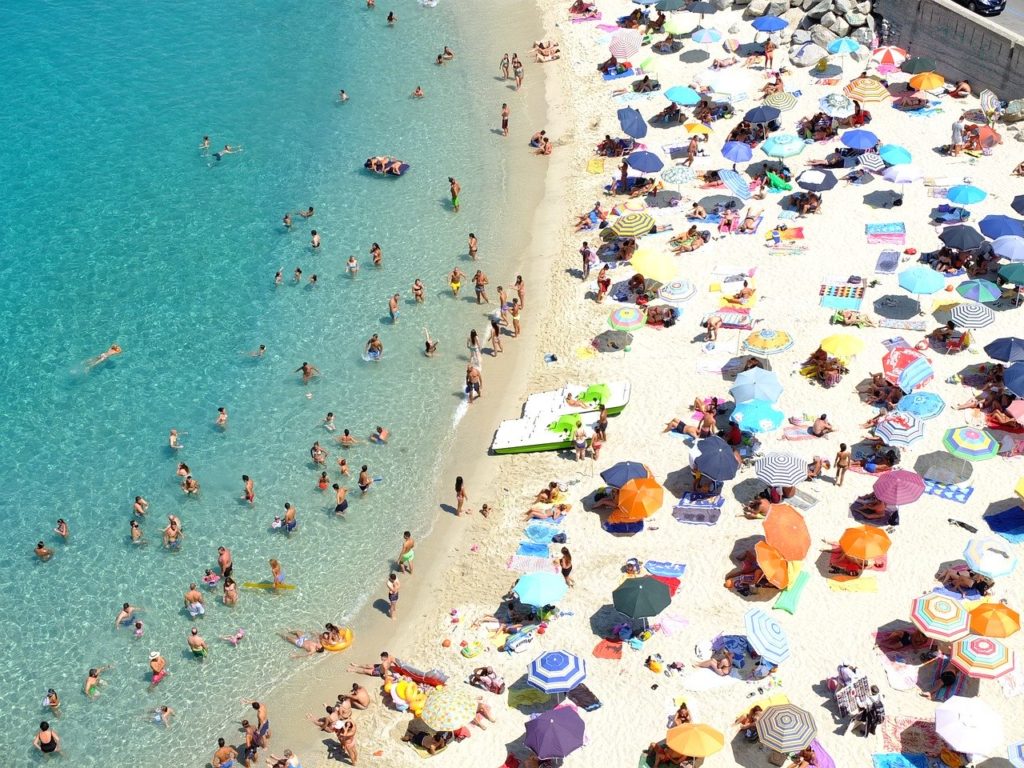
As the temperature continues to rise, the lockdown in many parts of Europe is being eased to allow people to go out. This has led to a sharp rise in the number of people going to the beaches in some part of northern and western Europe. European beaches are beginning to get back to life, although in a different form than it used to be before.
Greece is experiencing an increased heatwave recorded in years. As a result, the country has reopened some of her beaches. However, things were not like it was before. The social distancing rule was to be in place in all the opened public beaches. The way the ease of beach restriction plays out will determine if the country will be able to allow tourism during the summer. Greece relies heavily on tourism and the pandemic has hit them hard, making them the EU country with the possibility of the worst recession due to COVID – 19.
There was a strict guideline on beach operations in Greece. Only 40 people are allowed in 1000 square metres. Distance between sun umbrellas should be 4 metres. Breaking the rules may attract a fine on the business.
Earlier in France, hundreds of beaches were reopened for the use of swimmers, anglers and runners. Then, it was followed by the ease of restriction to beachgoers. However, residents close to beaches in north-western France complained of lack of social distancing among beachgoers, which could lead to the second wave of COVID – 19. Beaches at Damgan, Billiers and Erdeven were on Wednesday shut down because people flouted the rules of social distancing.
In the Netherland, lockdown rules have been relaxed, even though beaches were still closed to beachgoers. Surfers can still go on with their surfing as long as there is a 5 feet distance between the surfers. Municipalities in the Netherlands have urged people from Germany to stay in their country for the Ascension Day public holiday held on Thursday.
As for England, the beaches are seeing an influx of people defying the social distancing rules and unconcerned about the possibility of a second wave of the virus. Vehicular traffic was experienced along Saunton Sands beach in Devon. A similar situation was witnessed at a nearby beach in Sefton. Perranporth beach in Cornwall has had an influx of people in the past days, with people travelling a distance of 130 km to the beach.

Italy eased the lockdown rule and allowed people to leave their houses. Surfers are allowed to visit the beaches. Visitors maintaining social distance rules are also seen visiting the beaches. The once deserted beaches are beginning to see people with face masks and wide spaces between the sun umbrellas. Plans are in place to make the beaches safe as the beach season approaches.
While Spain is making plans to ease lockdown restriction in July, the government has allowed beaches to reopen for operations as long as they meet the social distancing conditions. Swimming pools will be strictly by appointment and will only take 30 per cent of its usual capacity.
Europe has recorded over 1.8 million cases of COVID – 19. The death rate across Europe has risen to 169,000. There is the fear of a second wave as countries begin to ease lockdown restrictions and people now visit beaches without adhering to the social distancing rules. International travels to Europe is still not allowed for many countries

Pingback: European Countries Begin to Ease Travel Restrictions - EU Traverse